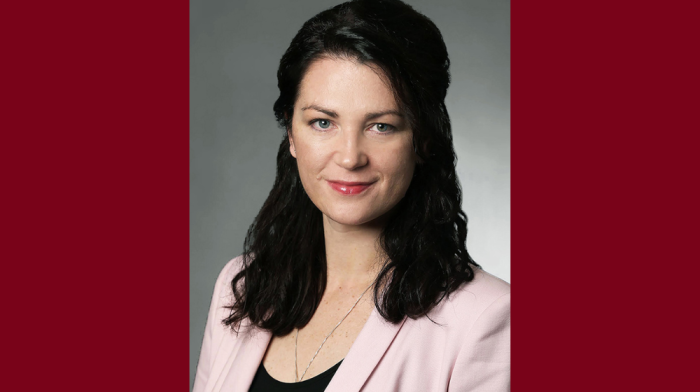
Siobhan Flanagan, MD, is a pediatric and adult interventional radiologist with the University of Minnesota Physicians (M Physicians). She and her team use imaging guidance and other minimally invasive techniques to diagnose and treat medical conditions. Dr. Flanagan specializes in portal hypertension interventions, interventional oncology and vascular malformation.
Since radiologists deal with imaging, they can often be fairly removed from patient interaction. However, Dr. Flanagan says that one of her favorite aspects of interventional radiology is the fact that she continues to meet with patients face to face.
“I like interacting with patients,” she says. “And I like trying to fix problems. Interventional radiologists are asked to come up with unique solutions to different problems, and I like the process.”
Dr. Flanagan became interested in radiology during an anatomy course in her first year of medical school at the U of M, and a lecture a few years later influenced her decision to pursue interventional radiology.
“I was just so amazed at what you could do with catheters and tiny incisions,” she recalls. “I was more familiar with a classic surgical approach, but the professor just made this sound so interesting and so innovative.”
Today, Dr. Flanagan spends her days performing a variety of procedures in the hospital, from dialysis line insertion to removing pulmonary artery clots. Procedures can be as short as five or ten minutes or as long as three or fours, depending on their complexity.
For Dr. Flanagan, the ever-changing landscape of the field is part of what excites her about interventional radiology. Being able to solve problems differently than they’ve been solved in the past is a thrill, and specifically being able to use those techniques in treating pediatric patients.
“Working with children is exciting for me,” she explains. “Typically pediatric care has been largely driven by large procedures. But a lot of what we do in adult patients can be applied to pediatric patients, and I think there’s a lot of opportunity for innovation in pediatric care.”
One way Dr. Flanagan has seen pediatric care change is in techniques used to open up veins and arteries, which previously required a big surgery that may or may not have worked long term. Using imaging to perform minimally invasive procedures may be better for patients in the long run.
Along with treating patients, Dr. Flanagan enjoys her role as a faculty member at the U of M Medical School.
“Teaching is fun,” she emphasizes, “I enjoy the teaching process, and it’s really rewarding to watch medical students and residents learn, understand and progress as providers.”
Being in academic medicine presents a wealth of challenges and opportunities for both students and faculty to grow.
“Academic institutions tend to bring very interesting cases to our practices,” Dr. Flanagan states. “They’re usually rare, unusual problems that require problem-solving.”
When it comes to advising learners in interventional radiology, Dr. Flanagan has three important pieces of advice: see as much as you can, don’t forget about the importance of patient interaction and never be afraid to ask questions.
“These are things we talk about with our residents every day,” she says. “It’s about improving as much as you can and always remembering that patients deserve our attention, compassion and time, even though we’re really busy.”